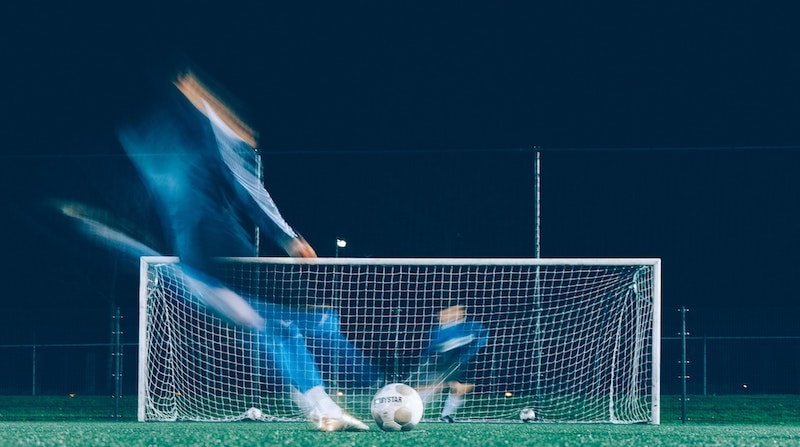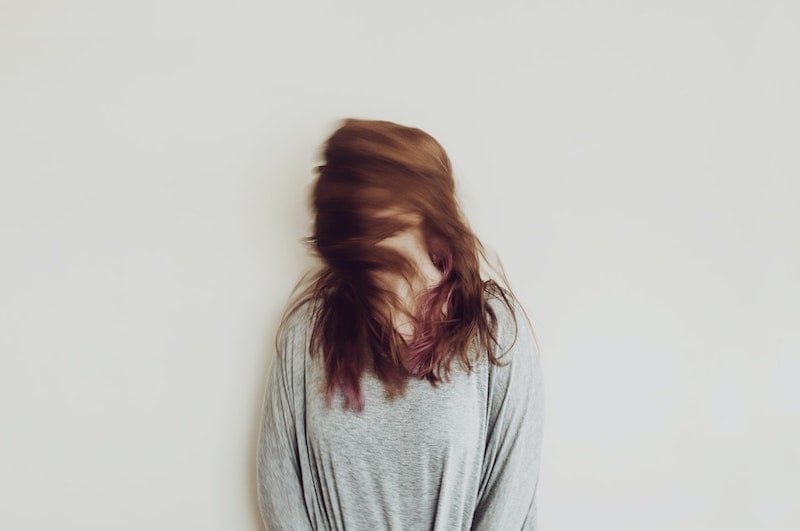What Is Motion Blur & How Do I Use It? Photography Basics Explained
Last Updated on

Motion blur is a tricky yet beautiful effect that photographers use to blur or smear a moving object. The intent is to make static images look dynamic in a good way.
When using motion blur, the rule of thumb is to keep the camera still while the subject moves. The resulting photos have an aesthetic blur that helps viewers believe that they were present in that scene in reality.
Motion blur isn’t a camera shake that gives fuzzy images. Instead, it blurs the photo on purpose and is supposed to be visible. The effect is ideal for sports and street photography, which mainly capture fast movements. You can capture multiple types of photos with the motion blur feature. These could include dramatic, surreal, black-and-white, and cinematic photography. The possibilities are endless!
Let’s learn more about motion blur and how you can use it to achieve better results.

How to Work With Motion Blur
To make motion blur work, you must tweak your camera’s settings a little. Some features that need modification include the shutter speed, aperture, ISO, and the camera’s stability.
Here is how you must adjust these settings to use motion blur:

Slow Shutter Speed
The shutter speed is the most crucial feature in every type of photography. Generally, you use a faster shutter speed to freeze the movement in the frame and capture a sharp, crisp image. Thus, for the motion blur, you’d need to make the speed slower to capture a ghost-like moving object.
It’s difficult to determine the exact shutter speed required to take the perfect blurred shots. It varies depending on how quickly the subject moves, the scene’s brightness, and the intensity of blur you want.
The slower the subject’s movement, the lengthier speed should be set. For example, you can adjust your shutter speed to around 1/125 seconds if it’s a moving truck. Whereas if it’s waterfalls or night trails, 30–60 seconds would be perfect. You can also try your camera’s bulb mode with motion blur to add more value.
Small Aperture
Photographers know what a slower shutter speed could bring: more light to the sensor. As a result, you may capture too bright or overexposed images. So, the next adjustment to make is narrowing down the aperture.
A small aperture reduces the overexposure of the photos and maintains the natural colors. If you don’t want to use the small aperture, you can shoot in darker rooms or keep the light of the scene low.
Low ISO
To avoid overexposure in the photos, you can also lower your ISO. For example, if you’re shooting on sunny days, 100 ISO would be enough.
Tripod for Stability
The key to capturing perfect motion blur photos is to keep your camera stable. Use a tripod stand compatible with your camera’s model to ensure the device is well-fitted. Otherwise, you may get distorted photos instead of blurred ones.

What Are the Different Types of Motion Blur?
There are two motion blur effects: a focused background with a blurred subject and a blurred background with a focused subject (also called panning). Let’s discuss both in detail:
1. Focused Background and Blurred Subject

This motion blur includes purposely blurring the subject to give a movement effect. This technique also shows the speed of the moving subject, especially at night traffic. It will display the headlights and taillights of the cars as blurred lines, showing how fast the vehicles are moving.
Another use case of this motion blur method is in waterfall photography, where the water continuously moves. To capture the moving stream of water, you’d need to slow the shutter speed to create the perfect blurring effect.
The backgrounds of both of these pictures remain focused and clear.
2. Panning: Blurred Background and Focused Subject

The panning feature keeps the moving subject in focus and the background blurred. To capture motion blur with this technique, you’d need to slow the shutter speed, as usual, around 1/20. Then, hold the lens considerably down, preferably halfway, and keep the focus on the subject.
Use the viewfinder to track the subject when they move. Then, as it comes into focus, immediately release the shutter. The resulting photo will have an in-focus subject moving in a blurred background, portraying the perfect sense of movement.

Where Is Motion Blur Used?
The use cases of motion blur are endless. As a photographer, you can bring out your creativity and try capturing different moving objects. Some situations in which motion blur works wonders include:
Storytelling
Most photographers use motion blur to tell deep, conceptual stories to viewers. But of course, all of them don’t have to be conceptual. Instead, you can play a little with the background contrast and link it with the moving subject.
For example, suppose a person is passing by a wall with funky posters. By blurring the subject and emphasizing the posters, you can show them as if they are asking the person to stop and notice them.
City Life Buzz

City life is full of buzz, with movements happening every second. With motion blur, you can capture the real busyness of city life and make them look more vibrant and eye-catching.
For this shot, you need to stand at a safe place and set your tripod stand. Now, adjust the shutter speed, ISO, and aperture on the camera and capture photos.
If you’re willing to challenge yourself, try taking shots when crossing a road or walking on a footpath. But don’t compromise your safety while doing so.
Photos From a Moving Car
Capturing photos from the window of a moving car is easy. However, remember that shooting directly from your car’s window will give you completely blurry images. So if you want some stillness, try including your vehicle in the frame.
If you’re a travel enthusiast or run a lifestyle blog, it’s the perfect way to capture the real essence of your journey.
Surreal Photography

Motion blur can help you capture the ideal photos if you want to excel in surreal photography. You can start by capturing simple but intriguing pictures of subjects in easy backgrounds.
For instance, you can take faceless photos of your friend. Ask her to stand against a white wall and prepare her to shake her head multiple times. Then, set up your tripod, adjust the settings, and take the position.
Just as you release the shutter, ask your friend to move their head with hair falling on her face and hiding it. This will give a little blurry effect to the picture while maintaining its anonymity.
Sports Photography
Sports photography captures continuous movements from different angles, making it the ideal use case for motion blur. For example, you can go to your nearest park or attend a soccer game and try to capture different types of movements with the ball.
You’ll be surprised to see the results. The pictures would look more like well-crafted paintings than random shots.
Candid Photography
It’s free-style photography in which you have to take candid photos of people at any random time and location. For example, the venue can be a subway station, and the subject can be a woman reading a magazine.
You can also capture people near the train for mind-blowing motion blur photos. Stay in position and release the shutter as the train passes. It is the ideal time to capture stunning blurred pictures with the perfect postures.
Amusement Park Photoshoot

Motion blur pictures look absolutely gorgeous when captured in places with vibrant colors and lights. One such place is an amusement park. You can capture moving rides, people screaming on roller coasters, munching on cotton candies and ice cream, running, laughing, and much more.
This is the most fun use case for motion blur, giving you joyous and appealing pictures.
Nostalgic Photography
Vintage photography can never go out of fashion. So, capture some stunning motion blur photos and turn them into black and white to give them the perfect nostalgic look. The resulting images will look like they’re taken from an old camera.
Dance Photography
Motion blur is a valuable feature in capturing professional dancers performing their routines. It records every dance move of the subject and gives your photos an aesthetic vibe.
While taking these shots, emphasize lighting on the subject, not the background.

Advantages of Motion Blur
Motion blur comes in handy in multiple situations and photography niches. However, if you’re still not convinced about using this feature, here are three advantages of this effect to help you decide.

1. It Portrays a Story
Motion blur strengthens the meaning of photos. When used correctly, it makes your photos intriguing enough to capture the viewer’s attention and make them wonder about the hidden message.
The perfectly captured motion blur shots take viewers to the scene where the picture was captured. They feel like they are standing beside the photographer and witnessing the situation with their own eyes.
2. It Adds Action
Motion blur adds a sense of action to an ordinary, static photo and makes it look more dynamic. The two best examples are a moving dirt bike and a dancer.
Imagine a dancer spinning, spreading their legs and arms, and jumping here and there. By using motion blur, you can show the viewer every movement taking place.
Now let’s come to capturing the dirt bike moving alongside the mountain. The correct use of motion blur will focus on the mountain and blur the dirt bike. It will show the viewers that the bike is roaring through the static mountain.
To capture the exact intensity of the action, you must keep your shutter speed slower than usual.
3. It Gives Fantastic Results
Motion blur blends two or more moving objects to achieve aesthetic results. If you capture two moving subjects without the motion blur, you’ll have a distorted picture taken with shaky hands.
Without this feature, the critical aspects of the images, such as lightning, contrast, and brightness, all will look distorted. Additionally, the focus of the picture would be on the background instead of the subject or vice versa.
With low ISO, smaller aperture, and slow shutter speed, you can capture strikingly fantastic pictures with the desired amount of blur.

Disadvantages of Motion Blur
Motion blur is a fantastic feature, but you must know how to use it correctly. The effect has no disadvantages but may cause difficulties in static photoshoots. This is why many photographers despise motion blur as it smears their sharp images.
To avoid any mishap, ensure that you have tweaked your camera’s settings according to the abovementioned requirements.

Frequently Asked Questions (FAQs)
Here are some common questions that photographers ask about motion blur:

How to Capture Motion Blur in Photography
To capture motion blur in photography, you’d need to adjust these settings in your camera:
- Slow your shutter speed
- Use a tripod stand to stabilize your camera
- Make the aperture small
- Lower your ISO
- Use a neutral density filter
What Is the Best Shutter Speed for Motion Blur?
The right shutter speed depends on a few factors, including:
- Your subject’s speed
- The brightness of the scene
- The intensity of motion blur you want your pictures to have
There is no one perfect shutter speed for motion blur. You must keep your shutter speed slow to capture more movement and action in your shots. Meanwhile, if you keep the speed too fast, you won’t be able to benefit from the real essence of motion blur.
What Is the Difference Between Motion Blur and Distortion?
There is a huge difference between capturing blur photos by moving the camera and using motion blur.
If you keep moving the camera, it will give you a distorted photo with bad effects. Conversely, motion blur adds a creative and aesthetic touch to static images, making them look naturally dynamic.

Final Thoughts
Learning how to use motion blur in photography isn’t rocket science. But to execute it correctly, you need practice and lots of trials and experiments. So test different angles and contrasts, and don’t feel shy to bring out your inner creativity.
Make sure to adjust your camera settings before you jump into the field. Slow shutter speed, low ISO, and small aperture are the basics of acing motion blur photography.
Have fun and scale up your photography career!
Featured Image Credit: Jannes Glas, Unsplash
About the Author Robert Sparks
Robert’s obsession with all things optical started early in life, when his optician father would bring home prototypes for Robert to play with. Nowadays, Robert is dedicated to helping others find the right optics for their needs. His hobbies include astronomy, astrophysics, and model building. Originally from Newark, NJ, he resides in Santa Fe, New Mexico, where the nighttime skies are filled with glittering stars.
Related Articles:
How to Collimate Binoculars: 9 Expert Tips
Binocular Magnification Chart: Numbers & Distances Compared
How to Clean a Refractor Telescope: Step-by-Step Guide
How to Clean a Telescope Eyepiece: Step-by-Step Guide
What Is the Best Binocular Magnification for Hunting? Optical Features Explained
How to Clean a Rifle Scope: 8 Expert Tips
When Were Binoculars Invented? History, Today & Future
Monocular vs Telescope: Differences Explained (With Pictures)
